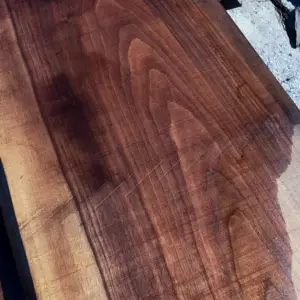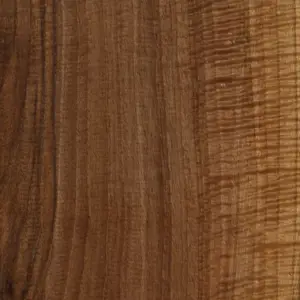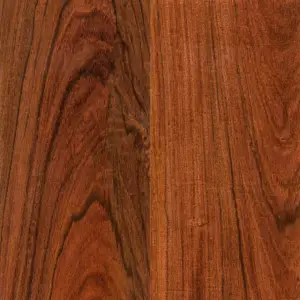Walnut Tables: Discover the Timeless Beauty of Walnut
Walnut tables, in the world of furniture, few materials can match the exquisite allure of walnut wood. With its warm tones, distinctive grain patterns, and natural beauty, walnut has become a sought-after choice for crafting stylish tables. In this article, we will delve into the enchanting world of walnut tables, exploring the captivating qualities that make them a centerpiece of interior design.

Bastogne Walnut
Close up detail

Black Walnut
Detail, although rough sawn

Claro Walnut
Detail

French Walnut
Detail

English Walnut
Clear coat

Butternut
aka White Walnut

Ipe
finished
Walnut Dining Table: Elevate Your Dining Space with Elegance
When it comes to dining tables, a walnut dining table stands out as a symbol of timeless sophistication. The allure of walnut lies in its rich tones and distinctive grain patterns, which vary among different walnut varieties. Let’s explore some notable walnut variations:
- Bastogne Walnut
-
- Renowned for its exceptional hardness and durability.
- Exhibits a stunning combination of dark chocolate tones and swirling grain patterns.
- Creates a striking visual impact, making it an excellent choice for statement dining tables.
-
- Black Walnut
-
- Celebrated for its deep, lustrous hues and elegant grain patterns.
- Showcases a range of colors, including dark brown, purplish undertones, and occasional streaks of lighter sapwood.
- Adds a touch of sophistication and warmth to any dining area, making it a popular choice among discerning homeowners.
-
- Claro Walnut
-
- Embraces a beautiful blend of warm browns, vibrant yellows, and occasional reddish hues.
- Features intricate grain patterns with waves, curls, and burls, offering a truly unique and visually captivating appearance.
- Captures the essence of nature’s artistry, infusing your dining space with organic beauty and warmth.
-
- French Walnut
-
- Known for its refined elegance and delicate hues.
- Exhibits a combination of light to medium browns, often with subtle grey or purple undertones.
- Showcases a straight grain pattern with occasional figuring, providing a timeless and sophisticated look.
-
- English Walnut
-
- Also known as Persian Walnut or Circassian Walnut.
- Features a range of colors, including light to medium brown with occasional purple or red streaks.
- Known for its fine, straight grain and smooth texture, making it a popular choice for furniture and cabinetry.
-
- California Walnut
-
- Native to California and commonly found in the United States.
- Exhibits a range of colors, from light to medium brown, often with darker streaks.
- Offers a balanced combination of durability, workability, and attractive grain patterns.
-
- Butternut
-
- Often referred to a white walnut.
- While not technically walnut, Butternut shares some characteristics with walnut, such as a warm tone and attractive grain patterns.
- Often used in furniture making.
-
- Carpathian Walnut
-
- Originating from the Carpathian Mountains in Eastern Europe.
- Offers a range of colors, including light to medium brown with occasional darker streaks.
- Features a beautiful grain pattern, adding character and charm to furniture and decorative items.
-
- Brazilian Walnut (Ipe)
-
- Not a true walnut species but often referred to as Brazilian Walnut due to its rich, dark brown color.
- Known for its exceptional hardness and durability.
- Features a fine to medium texture with straight to interlocked grain patterns.
-
Whether you choose the bold and dramatic Bastogne Walnut, the classic and versatile Black Walnut, the captivating Claro Walnut, the refined beauty of French Walnut, the elegance of English Walnut, the local charm of California Walnut, the durability of Brazilian Walnut, or the distinct beauty of Carpathian Walnut, each variety offers its own distinct characteristics. A walnut dining table crafted from one of these remarkable varieties will elevate your dining space with its exquisite tones and captivating grain patterns, creating an ambiance of elegance and charm.
By incorporating a diverse range of walnut varieties, you can choose the one that best resonates with your personal style and complements your existing décor. The richness and beauty of these walnut variations are sure to make your dining table a cherished centerpiece that captivates the attention of all who gather around it.
Live Edge Walnut
Infuse Your Space with Organic Beauty. If you seek a connection to nature within your home, a live edge walnut table is the perfect choice. These tables retain the natural contours and edges of the wood, embracing the organic beauty that walnut offers. By bringing the raw, untouched elements of nature indoors, a live edge walnut table creates a harmonious blend of rustic charm and contemporary style. Live edge walnut is one of our most popular tables, with or without epoxy.
Designing with Walnut: Tips for Creating the Perfect Table
Walnut tables possess a versatile appeal that complements a wide range of interior design styles. The warm, rich tones and exquisite grain patterns of walnut make it an excellent choice for creating a captivating focal point in your space. Here are some popular styles that walnut tables work exceptionally well with:
- Contemporary and Modern:
- Walnut’s smooth, refined surface and clean lines blend seamlessly with contemporary and modern aesthetics.
- The sleek and sophisticated appearance of walnut enhances the minimalist, streamlined designs often found in these styles.
- Mid-Century Modern
- Walnut was a favored wood during the mid-century modern era, making it a natural choice for authentic retro vibes.
- The warm, organic tones of walnut pair beautifully with the iconic, clean-lined furniture designs of this era.
- Scandinavian
- Walnut’s natural beauty complements the simplicity and lightness associated with Scandinavian design.
- The warm, earthy tones of walnut create a cozy and inviting atmosphere in Scandinavian-inspired interiors.
- Rustic and Farmhouse
- Walnut’s natural warmth and character add depth and charm to rustic and farmhouse styles.
- The combination of the wood’s natural imperfections and the cozy, inviting atmosphere of these styles creates a perfect harmony.
- Traditional and Classic
- Walnut tables have long been associated with traditional and classic decor, exuding elegance and sophistication.
- The deep, rich hues of walnut harmonize with ornate details and traditional furniture silhouettes, adding a touch of timeless beauty.
- Transitional
- Walnut bridges the gap between traditional and contemporary styles, making it a versatile choice for transitional spaces.
- Its ability to blend elements of both classic and modern aesthetics creates a harmonious balance in transitional interiors.
- Eclectic
-
- Walnut tables serve as statement pieces in eclectic interiors, adding warmth and visual interest.
- The unique grain patterns and rich colors of walnut contribute to the eclectic mix of styles, textures, and eras.
Whether you are drawn to the sleek lines of contemporary design, the rustic charm of farmhouse style, or the timeless elegance of traditional decor, a walnut table can enhance the overall aesthetic and create a cohesive look in your space. With its versatility and enduring beauty, walnut remains a popular choice for various interior styles, making it a versatile and timeless option for your dining area or any other room in your home.
Read about walnut floating tables, click the link. Here
Caring for Your Walnut Table
By following these care guidelines and considering the specific finish of your walnut table, you can ensure its long-lasting beauty and preserve its natural allure for years to come. Remember, a well-cared-for walnut table will continue to be a centerpiece of elegance and enjoyment in your dining space.
Conclusion
In the realm of furniture, walnut tables stand as timeless pieces of artistry. Their warm tones, distinctive grain patterns, and natural allure make them a sought-after selection for discerning individuals seeking elegance and sophistication in their homes. Whether you opt for a walnut dining table, a black walnut table, or a live edge walnut table, each piece reflects the remarkable beauty and enduring appeal of walnut wood. Discover the captivating world of walnut tables and bring the timeless elegance of this exquisite wood into your living space. Commission your walnut table today!





